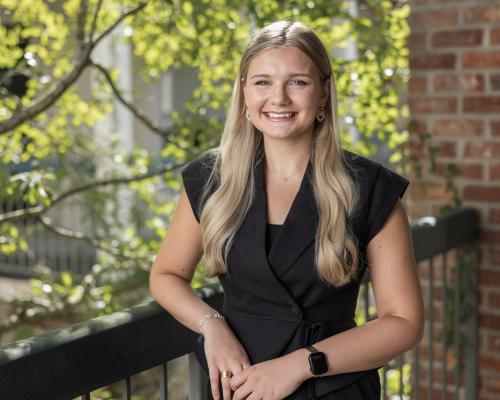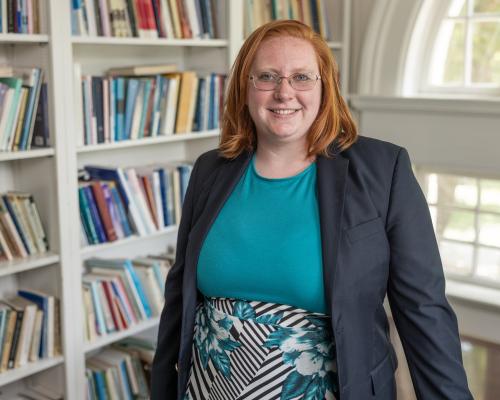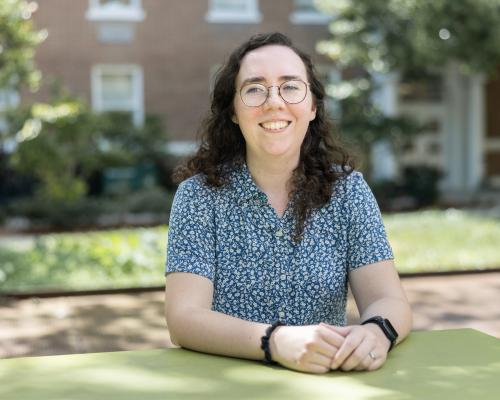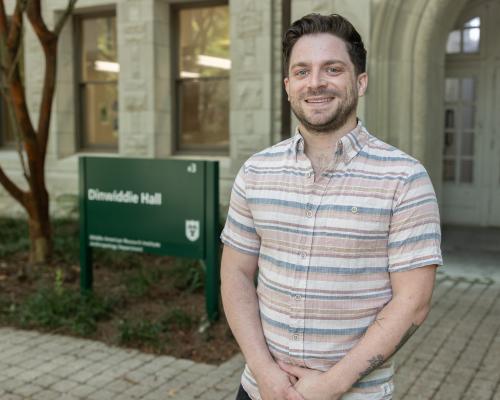Tulane graduate students spend a busy summer focusing on research
Although life on Tulane’s campus slows down in the summer, for some faculty researchers and graduate students, the break from classes gives them time to focus on their research.
Here is a look at some of the work graduate students have conducted this summer:
Brooke Montgomery

Brooke Montgomery is a PhD student studying psychological science. As part of the Learning and Brain Development Lab, she studies brain cognition and attention in babies. This summer, that has involved in-person sessions with babies and their caregivers, as well as a lot of statistical analysis. Families return for three sessions to allow Montgomery to observe changes in their development between the ages of 4 and 8 months. In these sessions, Montgomery and her colleagues observe the children playing with their caregivers in a brightly colored lab. They use eye-tracking technology to see what babies pay most attention to.
Before starting her PhD, Montgomery worked in the Learning and Brain Development Lab as the lab manager, and she said she was fortunate to have the opportunity to continue working with her colleagues at Tulane. “I really fell in love with the kinds of questions we were asking and this idea of change over time,” she said.
Barbara Lundebjerg

Barbara Lundebjerg is a PhD student in economics studying juvenile crime and delinquency. She has spent her summer analyzing data on students in Texas and conducting statistical modeling for her research on how incentives change behavior.
Lundebjerg’s research combines her desire to help children and her passion for economics. After volunteering at a juvenile detention facility, she began considering the economic causes of juvenile crime. "I'm very passionate about how to help those kids and what the underlying mechanisms are that either get those kids to be unsuccessful or successful in their life," she said.
Jill Love

Jill Love is a PhD student studying ecology and evolutionary biology. Her research focuses on plant genetics with a focus on evolution and adaptation. She has spent the summer cultivating monkey flowers, a type of yellow bloom that grows in California. In a lab, she investigated how environmental factors, particularly elevation, influence gene expression as the plants develop.
One of the things that fascinates Love the most about her research is the idea of phenotypic plasticity: how plants with the same genes can grow differently in different environments. “At a very fundamental level, I was like, ‘What is happening here?’” she said, “and that big, mysterious question is what drew me to research it more.”
AJ Golio

AJ Golio is a PhD student studying urban sociology. His research focuses on local government and neighborhood change. His summer was spent interviewing small business owners in the New Orleans area about regulations and analyzing those interviews.
Golio came to sociology by way of social work. “I thought I was destined to be a social worker, but somewhere in there, I felt like the day-to-day relational work maybe wasn’t where I was meant to be,” he said, “and I started to think more heavily about research.”
That realization led him to his current work with Tulane’s interdisciplinary City + Culture + Community program.
Nick Chapoy

Nick Chapoy is a PhD student studying biological anthropology. He is a primatologist whose research focuses on the vocalizations of capuchin monkeys. After spending time earlier this year doing fieldwork in Costa Rica, he spent much of the summer cleaning up and analyzing hundreds — if not thousands — of hours of audio recordings.
Chapoy was drawn to studying how primates communicate because he saw a gap in the research about these creatures that are so similar to us. “They have a lot of evolutionary parallels to humans, but we know almost nothing about how they’re communicating or what they’re actually paying attention to when they’re communicating,” he said.

